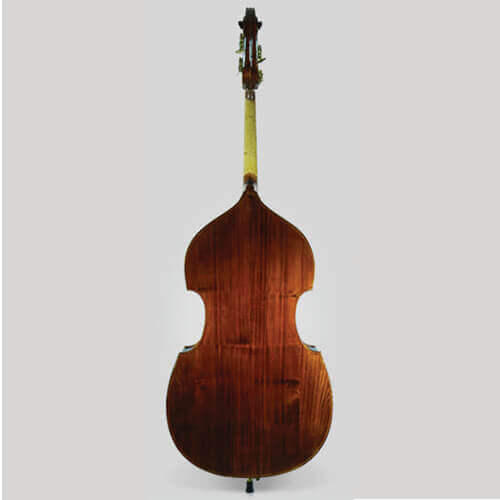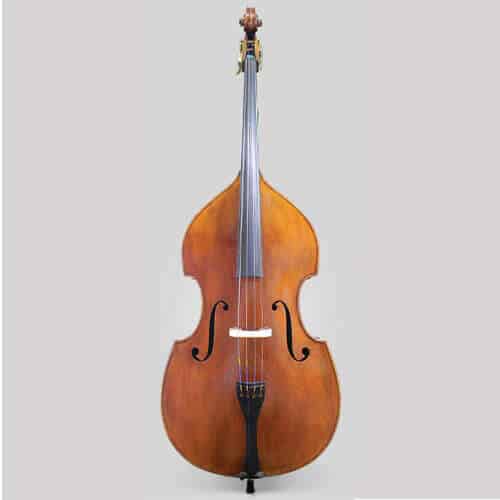Embarking on the journey to buy a double bass can be as thrilling. With its deep, resonant tones, this instrument is a cornerstone in various musical genres, from classical orchestras to jazz ensembles. This guide will help you navigate the nuances of choosing the right double bass, whether you’re a beginner taking your first step or an experienced musician seeking to refine your choice. We’ll explore the types of double basses, what to consider when selecting one, and how to make an informed decision that aligns with your musical journey.
What is a Double Bass?
The double bass, with its profound and resonant tones, stands distinct in the realm of musical instruments. This majestic string instrument, emerging from the viol family of Renaissance Europe, has journeyed through centuries, finding its voice in diverse musical genres.
In classical orchestras, it forms the backbone, providing depth and gravity. It becomes the rhythmic heart of jazz bands, guiding improvisations with its deep pulses.
Unlike its string family counterparts like the violin or cello, the double bass commands the lower sound spectrum, producing notes that resonate with an unmatched depth. This unique sound quality, grand size, and distinctive playing style set the double bass apart. It has a distinct sound other than the upright bass or acoustic bass.
Its comparison to other string instruments, like the electric bass guitar, illuminates its singular place, giving a clearer understanding of its indispensable contribution to music.
Types of Wood Used in Making Double Basses:
The materials used in crafting a double bass influence its sound and durability. This section will delve into the different types of wood commonly used in constructing double basses.
Each type of wood brings unique qualities to the bass instrument, affecting its tonal characteristics, resilience, and aesthetic appeal. Understanding these differences is crucial for anyone looking to purchase a string or double bass, as the choice of wood significantly impacts the instrument’s overall performance and longevity.
Let’s explore this aspect in detail, helping you make an informed decision when selecting your double bass.
Laminated
Laminated wood in double bass construction involves layering thin sheets of wood glued and pressed together. This process enhances the instrument’s durability, making it less susceptible to damage from humidity and temperature changes. Laminated basses offer a robust and consistent sound quality ideal for classical music lovers.
Their resilience to environmental factors and lower cost make them a practical choice for students, schools, and musicians who frequently play in varied conditions. The balance of affordability, durability, and decent sound quality makes laminated double basses popular for many beginners.
Hybrid
Hybrid double basses blend the benefits of laminated and fully carved woods, balancing quality and durability. Typically, they feature a carved solid wood top, usually spruce, paired with laminated back and sides. This combination enhances the instrument’s sound, offering a richness closer to fully carved models while maintaining the resilience and affordability of laminated basses.
The solid wood top significantly improves the tonal qualities, bringing warmth and complexity to the sound, particularly appealing to advancing students and semi-professional players. The hybrid design makes these basses versatile, suitable for varying playing environments and styles, and cost-effective for those seeking a step up from a fully laminated modern double bass.
Fully Carved
A fully carved double bass is the pinnacle of craftsmanship, made entirely from solid wood, such as spruce for the top and maple for the back and sides. This meticulous construction results in superior tonal richness, offering a full, warm sound with intricate nuances that appeal to a professional double bass player. The use of solid wood enhances the instrument’s resonance and depth of tone. However, this quality comes with a higher price tag and increased sensitivity to environmental changes like humidity and temperature. Such sensitivity requires careful maintenance but is a testament to fully carved double basses’ pure, unmatched sound quality.
Things to Keep in Mind While Searching for Your First Double Bass

Several vital factors will guide your decision when embarking on the journey to purchase your first double bass or bass violin. This process is not just about finding a musical instrument; it’s about finding a partner in your musical journey. Each aspect, from the type of wood and bass accessories to the size and brand, is crucial in aligning the instrument with your needs and aspirations. This section will pave the way for a deeper understanding of what to look for in a double bass, helping you make an informed and satisfying choice.
Price Range
When exploring double basses in the $4,500 to $6,500 price range, you can expect a noticeable increase in quality and craftsmanship compared to entry-level instruments. In this bracket, basses often feature better-quality woods, more refined finishes, and superior sound quality. You’ll likely find hybrid and some fully carved models offering more decadent, nuanced tones. The key is to look for instruments that balance cost with quality, ensuring you get the best value for your investment. It’s advisable to play different basses within this range to understand the subtle differences and select one that resonates with your playing style and sound preferences.
Personal Choices
Aligning personal preferences with the right double bass is crucial to selection. Consider sound characteristics that suit your preferred music genres. For example, jazz players might prefer a bass with a punchier, more resonant sound, while classical musicians may seek a smoother, more mellow tone.
Aesthetic aspects, like the finish and color of the wood, also play a role in your choice, adding to the overall enjoyment and connection with the instrument. Additionally, explore customization options like adjustable bridges or unique fittings of double bass strings, which can tailor the bass to your specific playing style and ergonomic needs.
Bass Sizing
Choosing the right size for a double bass is vital for comfortable playability and optimal sound. The most common sizes range from 1/4 to 4/4 (full size). Smaller sizes like 1/4 and 1/2 are generally suitable for children or players of shorter stature, ensuring easier handling and playability. The 3/4 size is the most popular among adult players, balancing size and sound quality. A full-size 4/4 bass, while providing rich, deep tones, may be challenging for some to play due to its size. It’s essential to try different sizes. Playing the double bass should feel comfortable and suit your physicality, as the right size dramatically influences your ability to play effectively and enjoyably.
Brand and Model
When selecting a brand and model for a double bass, considering renowned options like the Shen SB200 Willow Back Bass and Shen SB150 Hybrid Bass is beneficial. These models stand out due to their craftsmanship, quality of sound, and building materials. The Shen SB200, known for its willow back, offers a rich tone, while the Shen SB150, a hybrid model, balances quality and durability.
Researching these and other models involves assessing your specific needs, such as the type of music you play and your skill level. Personal trials and seeking advice from experienced players or teachers can significantly assist in making the right choice.
What Size Bass Should You Buy?
Choosing the correct size for a double bass is a crucial aspect of ensuring comfort, ease of learning, and optimal performance. Your height, arm reach, and hand size determine the appropriate size. When measuring for the right size, the endpin of the bass should be adjusted so that the upper curve of the instrument rests near your sternum and the top of the bass reaches around your forehead.
A smaller bass is often more manageable for beginners and younger players, making the learning process smoother. Consider transitioning to a larger size for a fuller sound as you grow in skill and stature. Remember, the right size should feel like an extension of your body, allowing you to play quickly and expressively without physical discomfort.
Should You Rent or Buy a Double Bass?
Whether to rent or buy a double bass depends on your circumstances and long-term musical goals. Renting can be a practical choice for beginners or those needing more time to commit to a significant investment. It allows for flexibility, especially for young players who may outgrow smaller sizes quickly. Renting is also beneficial for trying out different types and sizes without the upfront cost of purchasing.
On the other hand, buying a double bass is a wise investment if you’re committed to long-term playing. Owning your instrument means choosing one that best suits your style and needs. Additionally, a robust market for used instruments offers a more affordable entry point into ownership while still providing quality and longevity. Moreover, with professional bass restoration services, you can make your used bass new again.
Conclusion
Purchasing a double bass is a significant decision that merits careful consideration. Take your time to explore, try different instruments, and weigh your options. Remember, the right bass can significantly enhance your musical journey. It’s also wise to seek advice from experienced players or teachers, as their insights can be invaluable in guiding your choice. Trust your instincts and prioritize finding an instrument that resonates with your style and aspirations.
